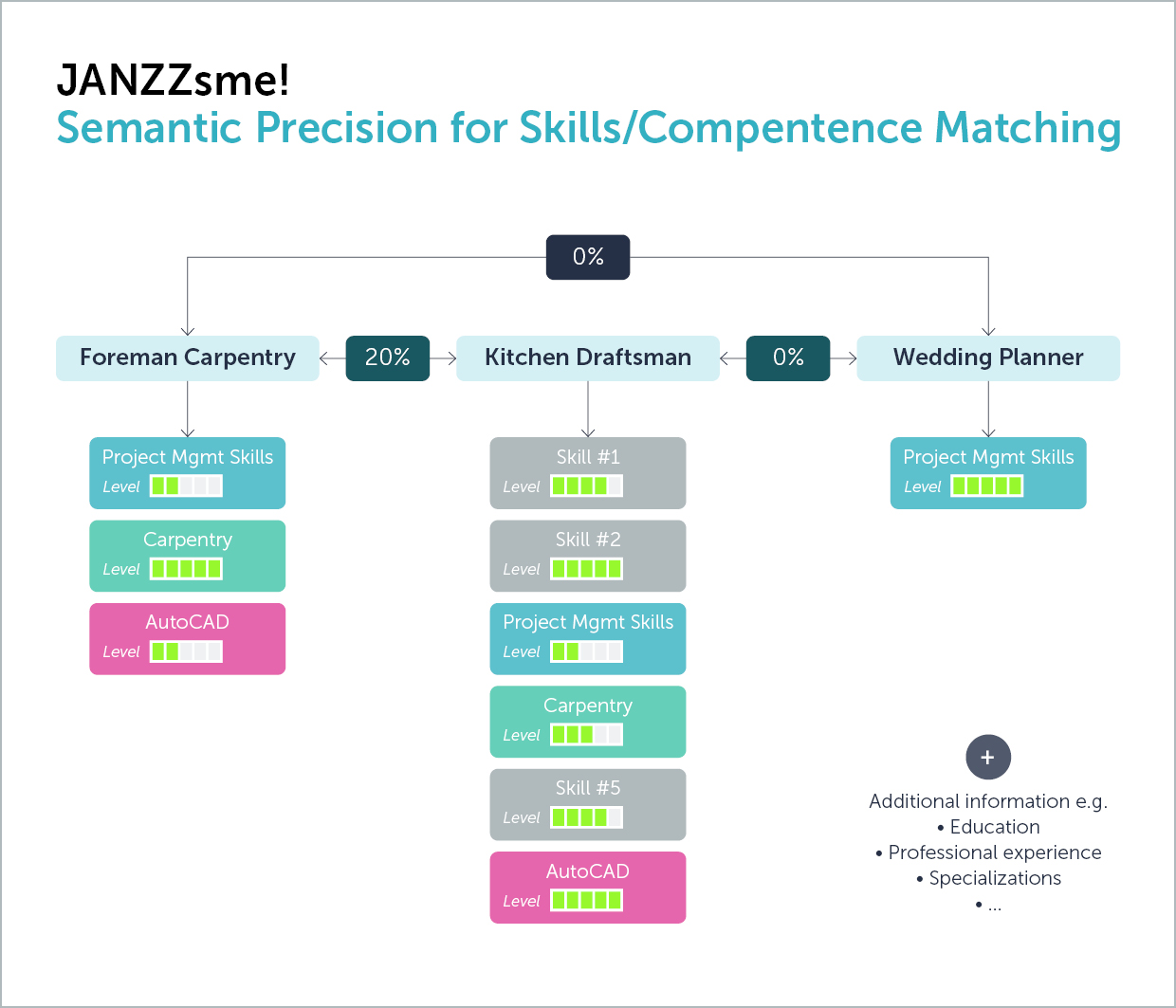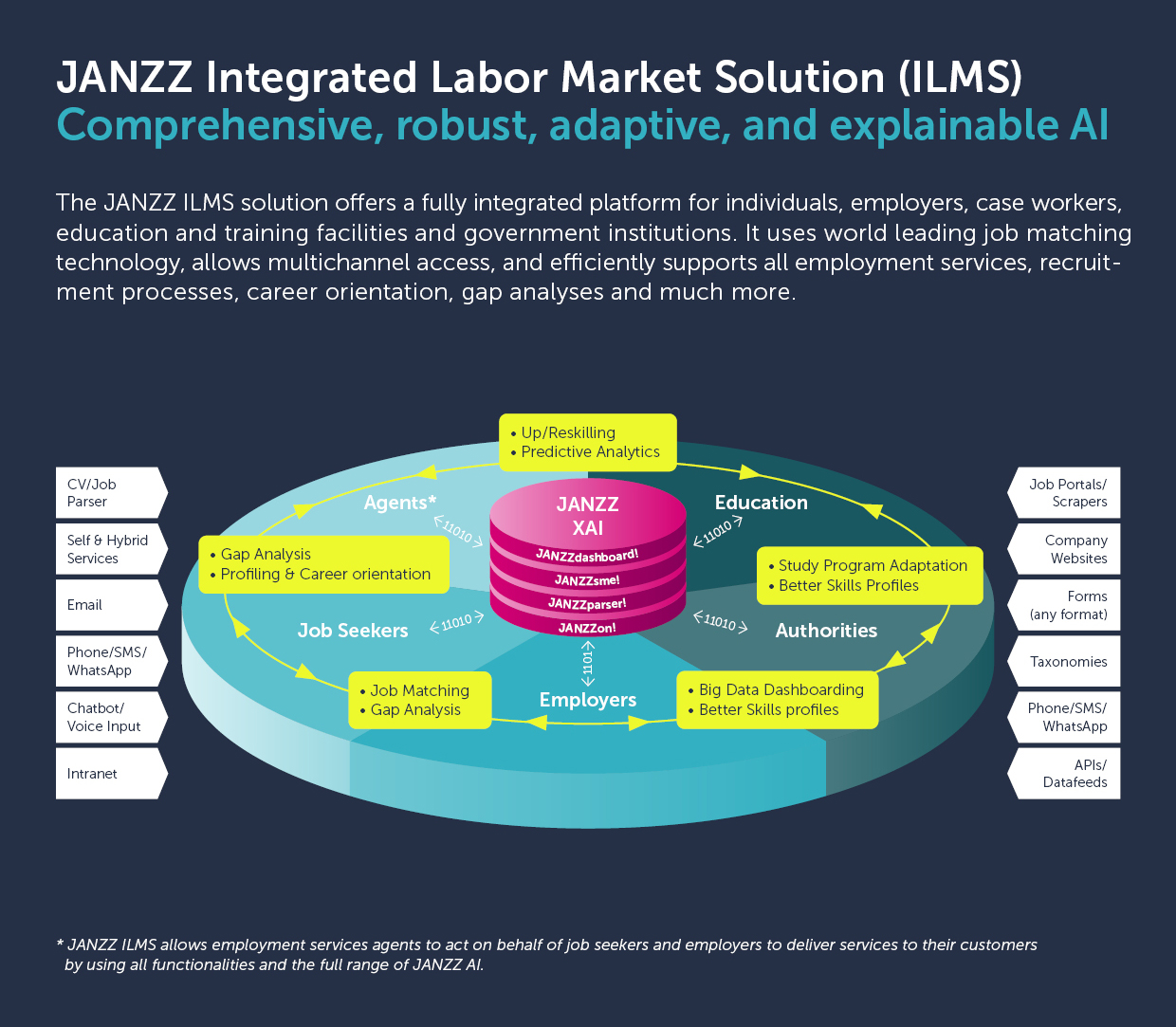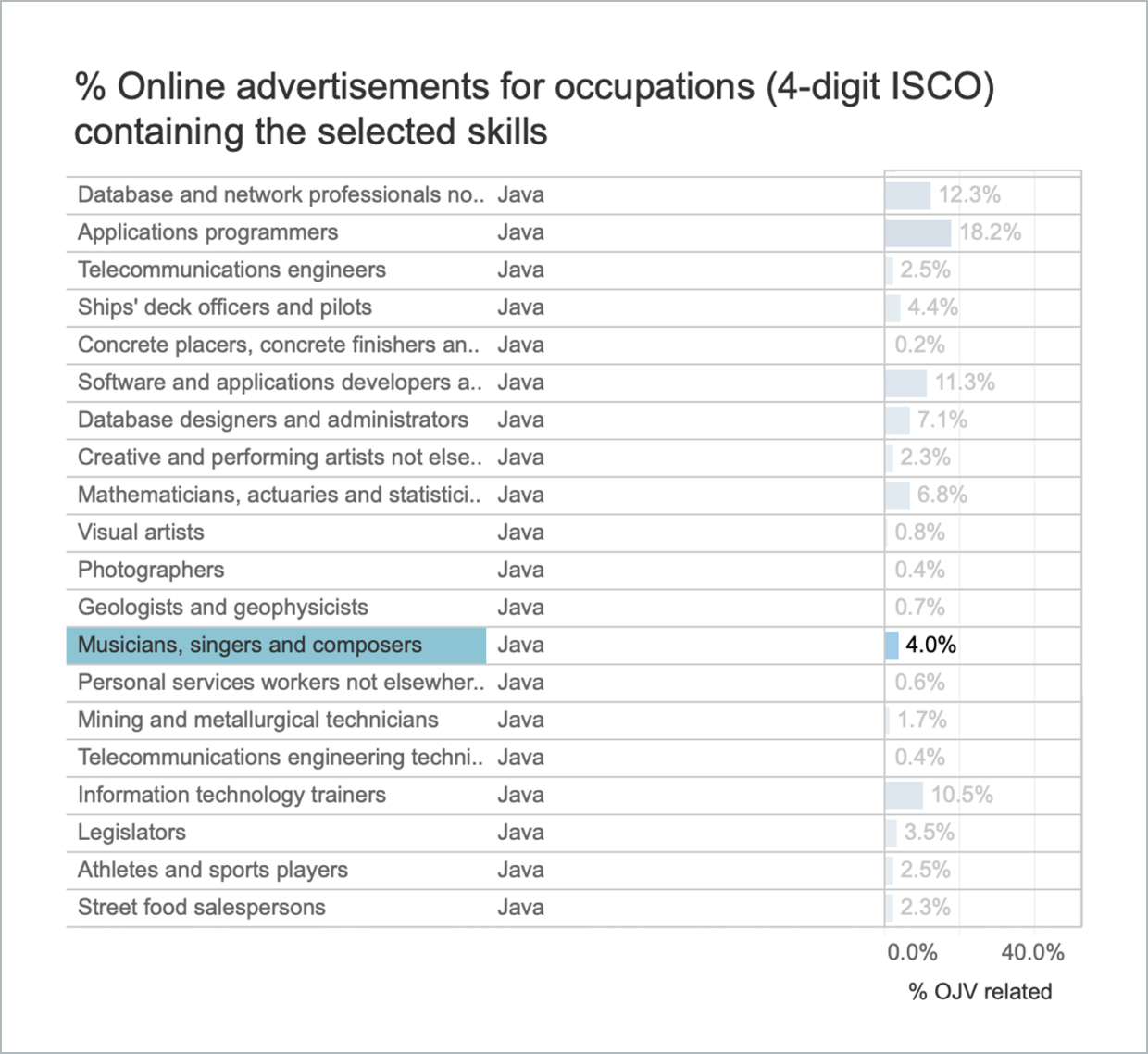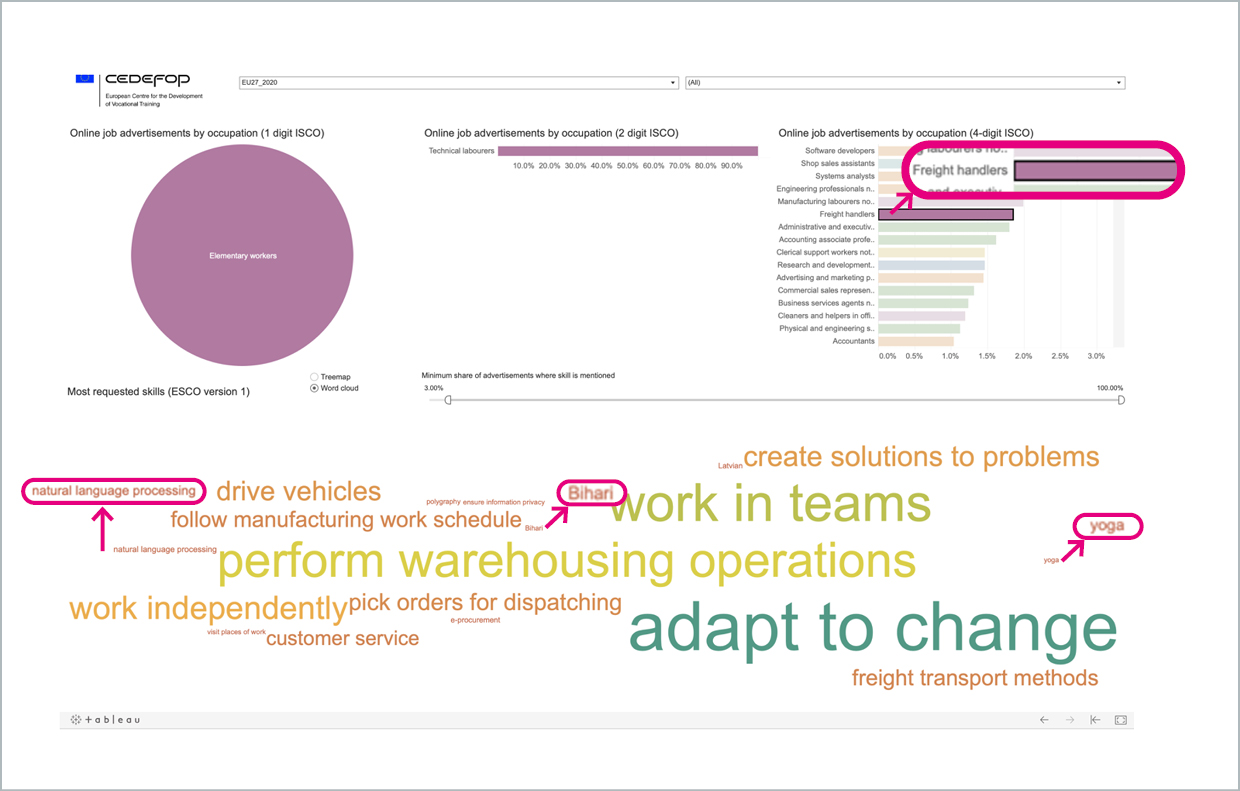One of the most prominent buzzwords around employment, employability and workforce management is skills. There is a lot of noise surrounding this concept and its fellow buzzwords like reskilling, upskilling, skills matching, skills alignment, skill gaps, skills anticipation, skills prediction, and so on. One can find myriad publications and posts explaining why skills are so important, how to analyze skills supply and demand, how to develop active labor market policies based on skills, how to manage and develop employee skills – as well as the many sites listing the “most in-demand skills” of the year. We certainly agree that skills are increasingly important, or as stated in one of the Gartner Hype Cycles 2020,
Skills are […] the new currency for talent. They are a foundational element for managing the workforce within any industry. Improved and automated skills detection and assessment allows for significantly greater organizational agility. In times of uncertainty, or when competition is fierce, organizations with better skills data can adapt more quickly […]. This improves productivity and avoids costs through improved planning cycles. [1]
This applies not only to HCM in businesses, but also to labor market management by government institutions. Considering how globally important these concepts are, there should be a clear or at least common idea of what this valuable currency is. However, in the much of the skills-related content posted online, there is a pervasive pattern of conceptual ambiguity, lack of specificity and lack of concision. So, in the last post, where we discussed a few examples of the noise surrounding jobs and skills, we called for a more fact-based discussion. In this post, we want to lay the groundwork for such a discussion.
Statistics 101
As a reminder from the last post: whenever you try to generalize, you run the risk of losing relevance. Despite all the globalism going on, the world is divided into regions. And each region has its own distinct economic landscape and its individual skills demand. Some regions are more focused on certain industries than others, and even when comparing regions with similar industries, skills demand and gaps can vary significantly, as has been shown in various studies and reports (for example here and here). So there will never be a meaningful list of top skills on a global level. Problem solving skills, blockchain, app development and other “top skills” propagated on various websites are simply not relevant for all activities across the globe. On top of this, it is extremely challenging to generate meaningful, representative data from online profiles and job postings. In general, the data collected online is biased, certain groups are underrepresented, others massively overrepresented. For instance, despite all the noise about apparently all-important, accelerating “digital skills”, most representative surveys highlight that EU and US labor markets require a generally low to moderate level of digital skills, with about 55 to 60 percent of jobs doing simple word processing or data entry and emailing. 10–15 percent need no ICT skills. Only about 10–15 percent need an advanced ICT level. [2] This alone shows that all these publications about the most important skills of the future etc. are at best very misleading.
To perform sound analyses and anticipate the skills that will be required in the future, to predict how these requirements will change (which skills will gain in importance and which skills will become obsolete or to perform target-oriented skills matching, we first need to be able to correctly recognize, understand, assign, and classify today’s skills. We will discuss the challenges (and strengths!) of skills and job data more in detail in the next post. First, we need to focus on an even more basic, but absolutely crucial aspect: we need to clarify what we mean by skills. Or abilities and competencies.
Truth be told, there are so many different definitions floating around, it is quite hard to keep up, and this is one of the key reasons why most approaches and big data evaluations fail miserably. It is therefore all the more important that we agree on a common understanding of this new currency.
What exactly is a skill?
O*NET defines skills as developed capacities that facilitate learning, the more rapid acquisition of knowledge or performance of activities that occur across jobs, [3] and distinguishes skills from abilities, knowledge and technology skills and tools, referring only to directly job-related or transferable skills and knowledge. ESCO, on the other hand, defines a skill as the ability to apply knowledge and use know-how to complete tasks and solve problems. Moreover, ESCO only knows the two main categories skills and competences, which – unlike O*NET – also include attitudes and values. In both classification systems, there is significant overlap between the categories. Indeed, on the other hand, just summarizes all these concepts under the term skill:
Skill is a term that encompasses the knowledge, competencies and abilities to perform operational tasks. Skills are developed through life and work experiences and they can also be learned through study. [4]
Clearly, these discrepancies in the definition of a skill will cause discrepancies in data collection and analysis, which in turn will affect the robustness of any extrapolation based on these data. But, for sake of argument, let us assume there is a universal definition of a skill. In a nutshell, we shall think of a skill as some kind of ability that is useful in a job.
Analyzing generic skills yields generic answers
Just having a written definition of a skill is far from enough. Apart from the fact that it still leaves a lot of room for interpretation, we also have many issues at the level of individual skills. One issue is the granularity, which differs extremely among the various collections. For instance, the ESCO taxonomy currently includes around 13,500 skills concepts, O*NET under 9,000 (in fact, only 121 of these are not skills of the type “can use a certain tool/machine/software/technology”) and our ontology JANZZon! over 1,000,000. Of course, the desired level of detail depends on the context. But for many modern applications of skills analysis, such as skill-based job matching, career guidance, etc., a certain level of detail is crucial to achieve meaningful results. Take the list of “top 10 skills for 2025” published by the World Economic Forum [5]:
- Analytical thinking and innovation
- Active learning and learning strategies
- Complex problem-solving
- Critical thinking and analysis
- Creativity, originality and initiative
- Leadership and social influence
- Technology use, monitoring and control
- Technology design and programming
- Resilience, stress tolerance and flexibility
- Reasoning, problem-solving and ideation
Depending on the context, e.g., industry or activity, these skills are understood very differently. They are thus too generic or unspecific to be of any use in matching or for meaningful statistics. In fact, for many occupations they are barely relevant at all. Or how often do you see these skills in job postings? Other generic skills we often see in predictive top 10 lists and recommendations have similar issues, for instance:
Digital skills: What exactly are these skills? Does this include operating digital devices such as smartphones or computers or dealing with the Internet? Do we expect someone with these skills to be able to post on social media, or really know how to handle social media accounts professionally? Is there any sense in summarizing skills such as knowledge of complex building information modelling applications in real estate drafting and planning under digital skills?
Project management skills: This too is almost completely useless when taken out of context like this. A large proportion of workers has project management skills on some level, but it is very difficult to compare or categorize this knowledge across roles or industries. For example, the individual project management knowledge differs substantially between a foreperson on a large tunnel construction site, a project manager for a small-scale IT application, a campaign manager in the public sector and a process engineer or event manager. Clearly, if the event industry comes to a halt, a project manager cannot just switch to the construction industry. So, it is nonsensical to comprise all these variations into a single “matchable” skill.

Think multidimensional
Being precise about skills does not just entail clearly identifying the skill and its context, the level of capability is equally relevant. The level of English required of a laborer on a construction site is certainly not the same as that required of a translator. However, construing a robust definition of levels also poses challenges: What does “good” or “very good” knowledge mean, and what distinguishes an “expert” in a certain skill? Is it theoretically acquired knowledge, for example, or is it knowledge already applied in a real professional environment? In contrast to other areas of big data, scales and validations – if they exist – are not necessarily binding. Thus many providers of this type of data just resort to disregarding levels entirely. In doing so, we lose a huge amount of information which would be highly relevant, not only for job matching and career guidance, but also in analyzing skills demand, say, as a basis for workforce or labor market management. Do we have a shortage of highly skilled experts or of employees with a basic working knowledge? Clearly, appropriate measures will differ strongly depending on the answer.
Say what you mean
Granularity in terms of identifying context and level of a skill are certainly important. The main issue, however, is clarity. One of the recurring top 10 skills required in job postings almost anywhere on the planet is almost always listed as Microsoft Office, which at a first glance may seem fairly specific. But what does this really mean? Technically, MS Office is a family of software, available in various packages comprising a varying selection of applications, which evolve over time. Currently, it consists of 9 applications: Word, Excel [6], PowerPoint, OneNote, Outlook, Publisher, Access, InfoPath and Skype for Business. So, if someone “has MS Office skills”, does this mean they can use all those apps? Hardly. And what does it mean to be able to use an app? According to ESCO, someone who can “use Microsoft Office” can
work with the standard programs contained in Microsoft Office at a capable level. Create a document and do basic formatting, insert page breaks, create headers or footers, and insert graphics, create automatically generated tables of contents and merge form letters from a database of addresses (usually in Excel). Create auto-calculating spreadsheets, create images, and sort and filter data tables. [7]
Many people may think they can use MS Office – until they read that definition. It seems that the less one knows about the full potential of an application, the more likely one is to identify as a capable user. This becomes even more apparent when we consider PowerPoint, which, surprisingly, is not included in ESCO’s “use Microsoft Office” skill. Instead, this is called ‘use presentation software’. There are thousands of applications to create presentations, many of which work quite differently to PowerPoint and thus require different knowledge or additional skills: Prezi, Perspective, Powtoon, Zoho Show, Apple Keynote, Slidebean, Beautiful.ai, just to name a few. And yet, the skill of “using presentation software” is just vaguely described in ESCO as:
“Use software tools to create digital presentations which combine various elements, such as graphs, images, text and other multimedia.” [8]
Putting aside the fact that there are many instances of presentation software, if this is a skill, in the sense of an ability that is useful in a job, then one should expect “creating presentations” imply es that the person can create usable or even good presentations. Amongst many skills, this includes the ability to distill information into key points, as well as a sense of aesthetics and storytelling skills. Yet, with enough self-confidence, a person lacking these implicit skills may still think that they are capable of creating great presentations.
And apart from this, what an employer means when they ask for these skills varies substantially. Someone looking for an office help in an old-school micro business may have a very different idea of MS Office skills than a large corporation looking for a marketing specialist. When it comes down to it, trying to interpret the expression “Microsoft Office” as a skill results in so much guesswork, that the informative value of “Microsoft Office skills” becomes comparable to that of “hammering skills”. Everyone can use a hammer, but does that mean anyone can work in any profession that involves hammers? Of course not.

My Math teacher used to say: If you mean something else, say something else. That could be a good place to start.
(Self-)assessment vs. reality
As mentioned above, many people’s self-image deviates from reality, resulting in under- or overestimating their skills (hammering, creating presentations or any other skill). In addition, there is the issue that completing a course or education that should teach a set of skills does not automatically mean that we have that skill set, i.e. that we can apply it productively in a job. Also, many unused skills have an expiration date. And yet, once we get used to listing a certain skill on our resume, we rarely take it off again, no matter how long we haven’t used it. Just asking ourselves the question can I apply this productively in my job? could go a long way in moving our projected image closer to reality. If we wanted to. Just as agreeing on a definition of a skill, standardizing skill designations and levels or just being plain more specific and accurate could give us a clearer common understanding of this valuable currency. If we wanted to. And then we can turn to the challenges of generating smart data – which we will investigate in the next post.
[1] Poitevin, H., “Hype Cycle for Human Capital Management Technology, 2020”, Gartner. 2020.
[2] Thanks to Konstantinos Pouliakas at Cedefop for pointing this out.
[3] https://www.onetcenter.org/content.html
[4] https://www.indeed.com/career-advice/career-development/what-are-skills
[5] http://www3.weforum.org/docs/WEF_Future_of_Jobs_2020.pdf
[6] Read the previous post for our view on Excel.
[7] http://data.europa.eu/esco/skill/f683ae1d-cb7c-4aa1-b9fe-205e1bd23535
[8] http://data.europa.eu/esco/skill/1973c966-f236-40c9-b2d4-5d71a89019be













